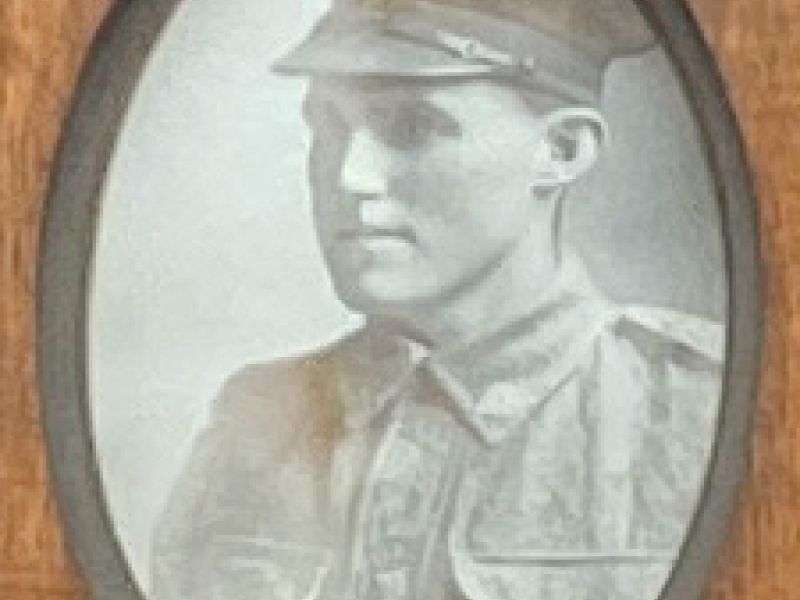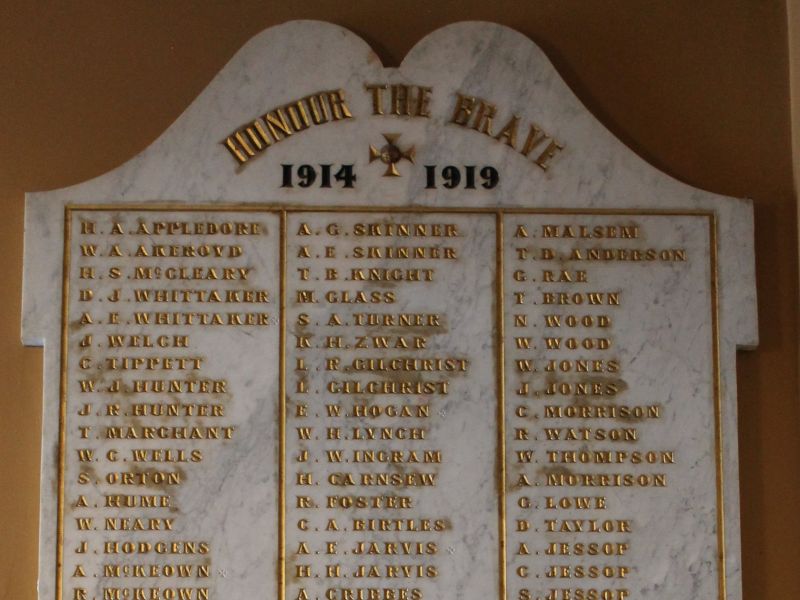Ernest James Richardson
Ernest was born in 1893 in Beechworth, Victoria. He was one of seven children to William and Mary Ann (née McDonald) Richardson.
Ernest was twenty-two, and working as a labourer, when he enlisted in the 1st AIF at Melbourne on the 22nd of August, 1916. He was given the Regimental Number 2382 and assigned to the 4th Reinforcements for the 38th Battalion of the 10th Brigade, 3rd Division. After initial training in Australia, Ernest embarked on HMAT A17 Port Lincoln at Melbourne, on the 20th of October, and sailed for the Western Front. On the 4th of December, the 4th Reinforcements were transferred to the troopship Willochra at Freetown, Sierra Leone, on the west coast of Africa. They disembarked at Plymouth, England, a little over three weeks later and marched into the 10th Training Battalion on Salisbury Plain in Wiltshire.
What followed was a further four months of training, where the men developed the skills required for the harsh fighting on the Western Front. On the 5th of April, they embarked on a ship at Folkstone and travelled to France. Arriving at the 3rd Australian Division Base Depot, at Etaples, on the 6th of April, they were finally taken on strength with the 38th Battalion in the field in France on the 8th of April.
Following more training at the famous “Bull Ring”, the battalion took part in their first main offensive at Messines. During the next three months the battalion rotated in and out of the lines in the Messines sector before moving north in September to billets behind Ypres. It was here that they prepared for the oncoming offensive that would take place east of the town.
On the 4th of October the battalion advanced in the second wave of the 10th Brigade’s assault on the Broodseinde Ridge. After eight days of fighting under atrocious conditions the remnants of the battalion advanced into the boggy conditions to the left of Tyne Cot. Heavy firing from the woods in front of them took a real toll on the exhausted and slow moving infantry. Although a small party reached the Passchendaele Church, the attack failed and the battalion retreated back to the approximate position of the original jumping off line. Along with the other battalions of the brigade, the 38th Battalion held this line until they were relieved by the 41st Battalion during the night of the 13/14th of October. At some stage during this withdrawal Ernest was killed.
He was buried three quarters of a mile west of Zonnebeke village. Unfortunately, after the war, his grave was not located. He is remembered on the Australian War Memorial Roll of Honour, the Baranduda Pictorial Honour Roll, the Beechworth War Memorial Honor Roll, and the Menin Gate Memorial (Commonwealth Memorial to the Missing of the Ypres Salient). For his service during the First World War, he was awarded the British War Medal and the Victory Medal.
The records contained in Ernest’s service file provide a clear indication of the lasting effects of the loss of a loved one to war. For many families the war did not end on the 11th hour, of the 11th day, of the 11th month, of 1918. Ernest’s mother, Mary, begged for information regarding her son and his fate. Between the 16th of November, 1917, and the 23rd of July, 1923, Mary wrote to Base Records in Melbourne twenty-four times. The letters show signs of being written in haste with some script difficult to interpret. Many of the letters ask for a picture of her son’s last resting place or whether he had made a will.
Statements included:
“I would like to hear more of my dear son as he has caused me many a bitter tear especially when he was my chief support I suppose I will have to go into some home now there is nothing else.” 17th January 1918
“”I am very sorry for troubling you so much but I cannot believe he is killed I dream alot about him.” 10th September 1918
“... his life was so dear to us to help his old father and me now dear sir as I am getting old no help now only what his poor old father makes that is very little I am getting very bad health lately under the doctor …”
“ …I do not believe he may have been killed at all I am quite sure he is been a prisoner somewhere in germany …” 10th February 1919
“... I have heard so much lately that I do not think he can be killed at all only lying in hospital with wounds in the head …” 11th July 1919
“... I think sometimes he is not killed but may be in one of the hospitals I had a dream about him that he may be in Melbourne…” 5th December 1921
Mary passed away on the 31st of August, 1938, and was buried in the Wodonga Cemetery. It’s not known whether she was ever told that her son had no known grave.

 Stephen Learmonth
Stephen Learmonth
